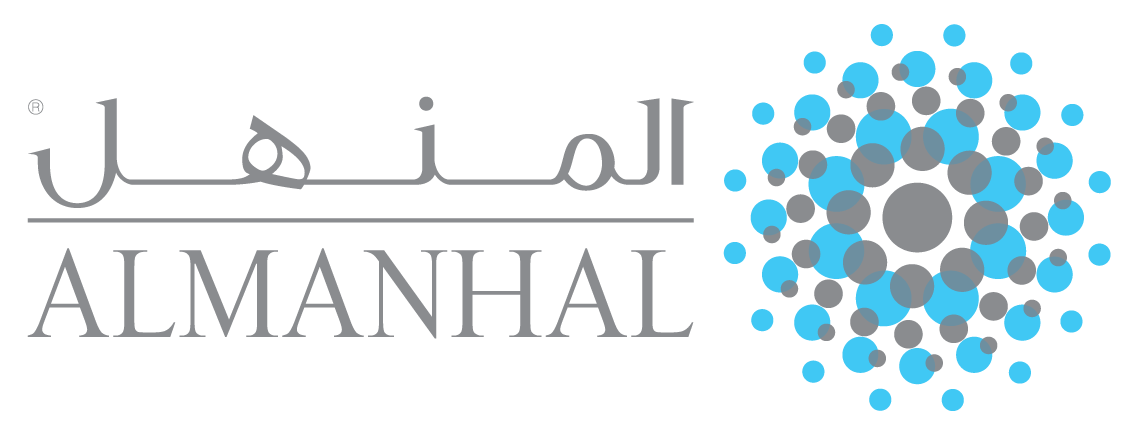Green Microfinance Promoting Sustainable Development Goals (SDGs) in Bangladesh
DOI:
https://doi.org/10.31436/jif.v10i.523Abstract
Green microfinance policy encourages Microfinance Institutions (MFIs) to provide green microfinance to promote environmental friendly for substantial financial development in SDGs. This paper examines the relation of profitability with green microfinancing on MFIs in Bangladesh. This paper aims to observe microfinance and Sustainable Development Goals (SDGs) for green microfinance development. The finding suggests that the significant aspects of green microfinancing are very much consistent with SDGs. The paper also investigates how far the MFIs in Bangladesh have been adopting green microfinancing to measure the future of green microfinancing and SDGs for Bangladesh. Among the first few to critically examine green microfinance from the perspectives of MFIs, this study is thought to be beneficial for the organizations and policymakers in the effort to evaluate the function and contribution of MFIs in addressing the primary environmental issues in Bangladesh. Moreover, through a meticulous evaluation of the adherence to the existing green microfinance policy, this research can be expected to become one of the blueprints to encourage green MFIs in Bangladesh.
Downloads
References
Ahmed, K., & Khan, R. (2016). Disclosure practices and governance quality: Evidence from micro finance institutions. Journal of Accounting and Organizational Change, 12(3), 325–350. https://doi.org/10.1108/JAOC-02-2015-0014
Alamgir, D. A. H., Hassan, M. K., Dewan, H. H., Ahmed, D. M., Mia, M. A., Hasan, T., … Su, Z. (2018). An Overview of the Microfinance Sector in Bangladesh. Asian Social Work and Policy Review, 7(1), 305–321. https://doi.org/10.13106/eajbm.2017.vol7.no2.31
Allet, M., & Hudon, M. (2013). Green Microfinance: Characteristics of Microfinance Institutions Involved in Environmental Management. Journal of Business Ethics, 126(3), 395–414. https://doi.org/10.1007/s10551-013-1942-5
Anis, F. M., & Kassim, S. H. (2016). Effectiveness of Zakat-Based Programs on Poverty Alleviation and Economic Empowerment of Poor Women: a Case Study of Bangladesh. Journal of Islamic Monetary Economics and Finance, 1(2), 229–258. https://doi.org/10.21098/jimf.v1i2.539
Archer, G. R., & Jones-Christensen, L. (2011). Entrepreneurial value creation through green microfinance: Evidence from Asian microfinance lending criteria. Asian Business and Management, 10(3), 331–356. https://doi.org/10.1057/abm.2011.9
Black, W., & Babin, B. J. (2019). Multivariate Data Analysis: Its Approach, Evolution, and Impact. The Great Facilitator, 121–130. https://doi.org/10.1007/978-3-030-06031-2_16
Boubacar, H. (2018). Internal governance mechanisms and the performance of decentralized financial systems in Niger. International Journal of Social Economics, 45(4), 629–643. https://doi.org/10.1108/IJSE-11-2016-0342
Forcella, D., Castellani, D., Huybrechs, F., & Allet, M. (2018). Green microfinance in Latin America and the Caribbean: An Analysis of Opportunities. Green Microfinance in Latin America and the Caribbean: An Analysis of Opportunities. https://doi.org/10.18235/0001348
Forcella, D., & Hudon, M. (2016). Green Microfinance in Europe. Journal of Business Ethics, 135(3), 445–459. https://doi.org/10.1007/s10551-014-2452-9
Hair, Joe F., Celsi, M., Money, A., Samouel, P., & Page, M. (2015). The essentials of business research methods: Third Edition. The Essentials of Business Research Methods: Third Edition, 1–494. https://doi.org/10.4324/9781315716862
Hair, Joseph F., & Fávero, L. P. (2019). Multilevel modeling for longitudinal data: concepts and applications. RAUSP Management Journal, 54(4), 459–489. https://doi.org/10.1108/RAUSP-04-2019-0059
Huybrechs, F., Bastiaensen, J., & Van Hecken, G. (2019). Exploring the potential contribution of green microfinance in transformations to sustainability. Current Opinion in Environmental Sustainability, 41, 85–92. https://doi.org/10.1016/j.cosust.2019.11.001
Iqbal, S., Nawaz, A., & Ehsan, S. (2019). Financial performance and corporate governance in microfinance: Evidence from Asia. Journal of Asian Economics, 60, 1–13. https://doi.org/10.1016/j.asieco.2018.10.002
Islam, A. M., Ali, M. M., & Medhekar, A. (2017). Exploratory results of green production, sale, willing to pay and financing: case of Bangladesh. Environmental Economics, 8(3), 8–17. https://doi.org/10.21511/ee.08(3).2017.01
Jaiyeoba, H. B., Adewale, A. A., & Ibrahim, K. (2018). Measuring efficiencies of Bangladeshi and Indonesian microfinance institutions: A data envelopment analysis and latent growth curve modeling approach. International Journal of Bank Marketing, 36(2), 305–321. https://doi.org/10.1108/IJBM-01-2017-0009
Josse, J., & Husson, F. (2016). missMDA: A package for handling missing values in multivariate data analysis. Journal of Statistical Software, 70(1). https://doi.org/10.18637/jss.v070.i01
Julia, T. (2016). An Appraisal On The Performance Of Banks Offering Green Financing In Bangladesh. (April).
Julia, T., & Kassim, S. (2016). Green financing and bank profitability: Empirical evidence from the banking sector in Bangladesh. Al-Shajarah, 21(Specialissue), 307–330.
Julia, T., Kassim, S., & Adawiah, E. R. (2018). Green Business Sustainability and Shariah Compliance in Bangladesh Context. 17th Kuala Lumpur International Business, Economics and Law Conference, (October), 308–326.
Julia, T., Kassim, S., & Ali, E. R. A. E. (2018). Are the Green Projects in Line with the Maqasid Shariah ? An Assessment of Green Firms in Bangladesh. The Global Conference on Islamic Economics and Finance 2018, (October), 317–335.
Julia, T., Rahman, M. P., & Kassim, S. (2016). Shariah compliance of green banking policy in Bangladesh. Humanomics, 32(4), 390–404. https://doi.org/10.1108/H-02-2016-0015
Khan, M. M. (2013). An Assessment of the Green Microcredit Projects in Bangladesh : Livelihood and Environmental Sustainability MOHAMMAD MOHAIMINUZZAMAN KHAN.
Maione, C., & Barbosa, R. M. (2019). Recent applications of multivariate data analysis methods in the authentication of rice and the most analyzed parameters: A review. Critical Reviews in Food Science and Nutrition, 59(12), 1868–1879. https://doi.org/10.1080/10408398.2018.1431763
Merkle, A. C., Hair, J. F., Ferrell, O. C., Ferrell, L. K., & Wood, B. G. (2020). An examination of pro-stakeholder unethical behavior in the sales ethics subculture. Journal of Marketing Theory and Practice, 00(00), 1–18. https://doi.org/10.1080/10696679.2020.1777434
Mia, M. A., Lee, H. A., Chandran, V. G. R., Rasiah, R., & Rahman, M. (2019). History of microfinance in Bangladesh: A life cycle theory approach. Business History, 61(4), 703–733. https://doi.org/10.1080/00076791.2017.1413096
Nabi, G., Islam, A., Bakar, R., & Nabi, R. (2017). Islamic microfinance as a tool of financial inclusion in Bangladesh. Journal of Islamic Economics, Banking and Finance, 13(1), 24–51. https://doi.org/10.12816/0051154
Nair, M., & Njolomole, M. (2020). Microfinance, entrepreneurship and institutional quality. Journal of Entrepreneurship and Public Policy, ahead-of-p(ahead-of-print). https://doi.org/10.1108/JEPP-07-2019-0061
Nugroho, L., Utami, W., Akbar, T., & Arafah, W. (2017). The challenges of microfinance institutions in empowering micro and small entrepreneur to implementating green activity. International Journal of Energy Economics and Policy, 7(3), 66–73. https://doi.org/http: www.econjournals.com International
Qian-qian, L. I. U., Man, Y. U., & Xiao-lin, W. (2015). ScienceDirect Poverty reduction within the framework of SDGs and Post-2015 Development Agenda. Advances in Climate Change Research, 6(1), 67–73. https://doi.org/10.1016/j.accre.2015.09.004
Raheem, M. M., & Meera, A. K. M. (2018). A Case for a Shari'ah Compliant Alternate Credit System to Facilitate Working Capital Management for Micro, Small and Medium Enterprises in Malaysia. Journal of Islamic Finance, 7(1), 26–37. https://doi.org/10.12816/0051132
Rashid, M. H. U., Zobair, S. A. M., & Uddin, M. J. (2018). Islamic Microfinance and Sustainable Development Goals in Bangladesh Islamic Microfinance and Sustainable Development Goals in Bangladesh. International Journal of Islamic Business & Management, 2(1), 67–80.
Roy, S., & Mohanty, R. P. (2020). Microfinance models in improving "quality of life": Empirical analysis on Indian perspective. International Journal of Business Innovation and Research, 21(1), 23–55. https://doi.org/10.1504/IJBIR.2020.104031
Rouf, K. (2012). Green microfinance promoting green enterprise development. Humanomics, 28(2), 148–161. https://doi.org/10.1108/08288661211228906
Sachs, J. D., Woo, W. T., Yoshino, N., & Taghizadeh-Hesary, F. (2019). Importance of Green Finance for Achieving Sustainable Development Goals and Energy Security. Handbook of Green Finance, 3–12. https://doi.org/10.1007/978-981-13-0227-5_13
Shahidullah, A. K. M., & Haque, C. E. (2015). Green microfinance strategy for entrepreneurial transformation: Validating a pattern towards sustainability. Enterprise Development and Microfinance, 26(4), 325–342. https://doi.org/10.3362/1755-1986.2015.027
Tunisan, E. D. (2015). The role of Islamic Microfinance in Poverty Alleviation: Lessons from Bangladesh Experience. Humanomics, 31(67323), 1–18. https://doi.org/10.1108/17538391111144515
Usman, S., Tasmin, R., Tun, U., & Onn, H. (2016). The Relevance of Islamic Micro-finance in achieving the Sustainable Development Goals. International Journal of Latest Trends in Finance & Economic Sciences IJLTFES, 6(August).
Weber, H. (2017). Politics of 'Leaving No One Behind': Contesting the 2030 Sustainable Development Goals Agenda. 14(3), 399–414.
Yunus, M., & Rahman, M. T. (2014). Green Marketing for Creating Awareness for Green Consumerism. Global Disclosure of Economics and Business, 3(1), 18–25.












